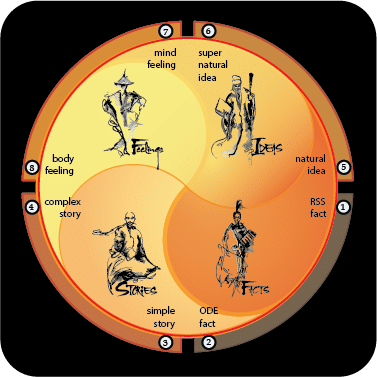Does Uniformity Prevent or Obscure the Truth?
In my model, there are four possible kinds of science: physical science (the science of visible things; e.g. matter), mental science (the science of invisible things; e.g energy), theoretical science (the science of unchanging things; theories & facts), and real world science (the science of changing things; real world outcomes). Notice there are two pairs of complementary opposites; the visible/invisible pair and the changing/unchanging pair. Notice also that each pair, by design, covers the complete range of possibilities. Thus together, they account for all possible things in our world.
Realize, this design eliminates many problems inherent in conventional science, for one thing, the problems which stem from the assumption that there should be only one kind of science. For instance, consider the idea that theoretical science cannot possibly translate well to individual, real world cases. Theoretical science equates truth to uniform (linear) patterns and outcomes, and uniformity exists only in theory.
For instance, in theory, 1 + 1 = 2. And in the real world, 1 apple plus 1 apple = 2 apples. But if you were now to add together two different apples, would the results of these two additions be the same? In theory, yes. But in the real world, not so much.
In theory then, theoretical science is correct. The more experiments result in predictably uniform outcomes, the more the theory is true. In theory, 1 + 1 will always = 2. And if theoretical science was the only true science, then unchanging things would be the only truth.
The thing is, unchanging things are not the only truth. They are the only truth, only in theory.
For instance, when exploring inherently complex subjects such as human nature (and any living things, really), the more closely experiments correlate to uniform outcomes, the less they translate to real world, individual cases. Why? Because the sine qua non of real world science (the single quality underlying all real world science) is change itself. The result of adding one pair of apples will never be the same as adding a second pair.
Okay. So nothing out in the real world ever repeats the same way twice. What does this have to do with uniformity as truth?
Even from this brief discussion, we see that the truth of the outcomes of these two sciences roughly exist in logarithmically inverse proportions. The more uniform a theoretical outcome, the less it correlates to individual real world results.
Is there a solution? Yes. But only if science can marry these two sciences together. Obviously, both kinds of scientific truths have great value. Moreover, because they together account for all possible scientific outcomes, doing this would raise science to a whole new level. Including that doing this would eliminate the scientific translation (theory to real world) problem.
Is doing this possible though? Can we marry the good in both together? We can if we design our experiments so as to result in outcomes which account for both unchange and change; for both uniformity and non-uniformity.
Can this be done? Absolutely. But this is a topic for another day.
